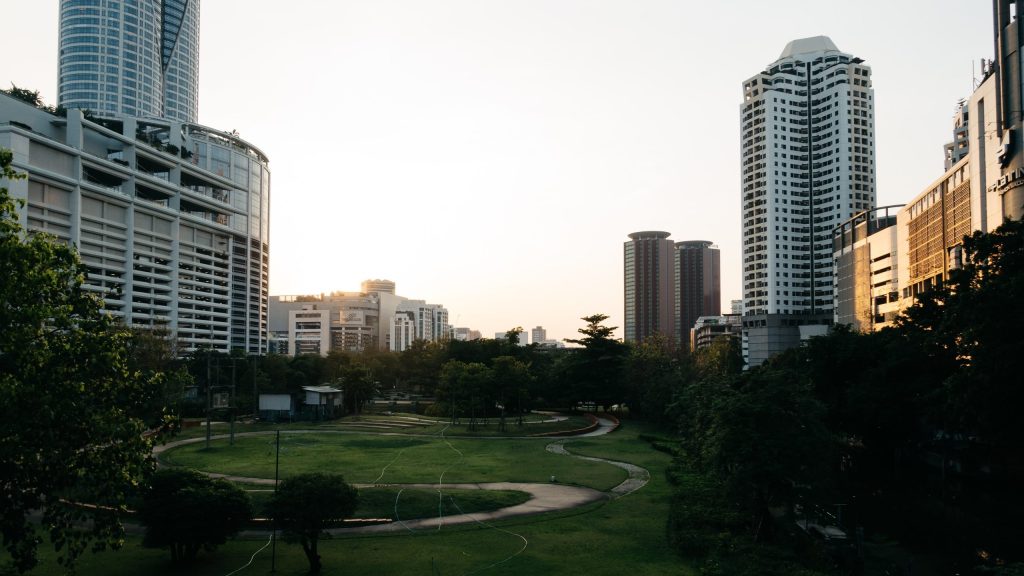
Policy Solution
Cool corridors
Commitment

Summary
Green and blue infrastructure immediately adjacent and parallel to prevailing winds cools corridors. Incorporating additional urban design principles in zoning can be used to optimize natural wind flow for cooling and prevent heat from radiating off of other buildings.
Implementation
Update design guidelines to encourage creation of cool corridors.
Considerations for Use
This is most applicable to new developments and is harder to implement in existing, highly dense areas. Natural landscape features like hills, valleys, or bodies of water can also function as ventilation corridors.
Overview
Climate:
Cold, Hot/Dry, Hot/Humid, TemperatePolicy Levers:
CommitmentGovernments set ambitious goals or targets to guide prioritization and investment.Trigger Points:
City planning processesIncludes city initiatives such as the development of climate action plan, pathway to zero-energy, master plan, transit plan, energy mapping etc.Evaluating or initiating major city infrastructure projectsIncludes projects such as city transit, street or utilities construction / re-construction etc.Introducing new or updated zoning/codesIncludes codes, zoning requirements or by-laws pertaining to urban planning and building construction activity.Intervention Types:
Buildings and Built FormSectors:
Buildings, Informal Settlements
Case Studies
Impact
Target Beneficiaries:
Property owners, ResidentsPhase of Impact:
Risk reduction and mitigationMetrics:
Decrease in surface temperature, Energy savings
Implementation
Intervention Scale:
City, District, Neighborhood, Region, SiteAuthority and Governance:
City government, State/provincial governmentImplementation Timeline:
Medium-term (3-9 Years)Implementation Stakeholders:
City government, Private developers, State/provincial governmentFunding Sources:
Private investment, Public investmentCapacity to Act:
HighBenefits
Cost-Benefit:
HighPublic Good:
HighGHG Reduction:
LowCo-benefits (Climate/Environmental):
Improve stormwater management, Reduce greenhouse gas emissionsCo-benefits (Social/Economic):
Improve the public realm, Save on utilities
